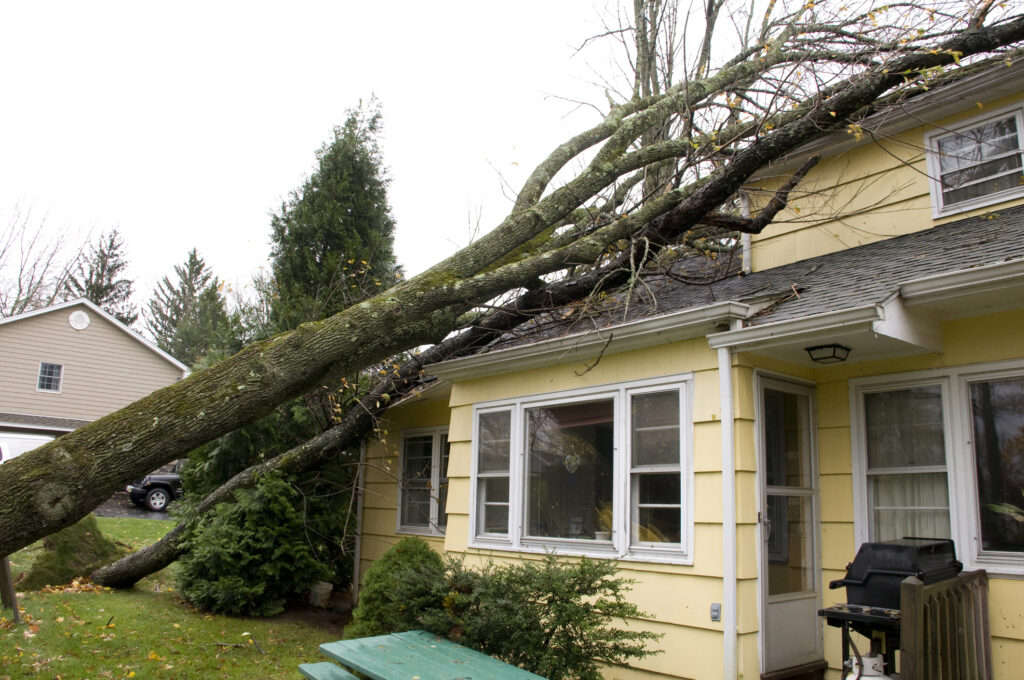Recently, I addressed a question posed by a reader who asked who is responsible for damage caused by a tree branch falling from an adjacent yard and crashing through the roof of their house, narrowly missing their child. The article addressed the answer to that question with the assumption that it was a tree owned or maintained by a municipality. This week, I will address trees owned by individual, non-governmental owners.
The reader’s inquiry involved a neighbor’s tree overhanging their property. State law provides that the owner of a tree whose branches overhang an adjoining landowner’s property is liable for damages caused by the overhanging branches. Therefore, if your neighbor’s tree drops a branch and causes injury to a vehicle, person, or structure, they are liable to you for the damages caused.
In general, you are legally allowed to take it upon yourself to cut off any tree branch that overhangs your property from the point where it crosses the boundary. Courts have ruled that shade and debris cast by a neighboring branch, blocking light, clogging gutters, deteriorating a roof, etc., can constitute a nuisance, thereby making the tree owner liable for any and all damages caused. The recovery of damages is generally proportional to the extent of the injuries. Indeed, in the 1952 case of Grandona v. Lovdal, the Supreme Court of California ruled and reasoned as follows: “Trees whose branches extend over the land of another are not nuisances, except to the extent to which the branches overhang the adjoining land. To that extent they are nuisances, and the person over whose land they extend may cut them off, or have his action for damages and an abatement of the nuisance against the owner or occupant of the land on which they grow; but he may not cut down the tree, neither can he cut the branches thereof beyond the extent to which they overhang his soil.”
However, there is a a major caveat: some jurisdictions, like Sausalito, have specific tree ordinances that may prohibit this kind of self-help. Before altering a tree, it is advisable to look into any such tree ordinance in effect. Additionally, even when no local ordinance exists, it would be beneficial to first talk to your neighbors before altering a tree rooted on their property; people can get very wound up over trees and it’s never wise to create unnecessarily hostile relationships with your neighbors.
If you have suffered harm from your neighbor’s trees but the neighbor will not consent to altering the tree, you can file an “action for abatement” requesting the court to order your neighbor to remove the trees or to allow you to cut the branches back to your neighbor’s property line. In Bonde v. Bishop, again in 1952, the California Court of Appeals reasoned with respect to an action by a tree owner against his neighbor who cut back the branches: “The finding that the tree in question was a constant menace to the property of the defendants is sustained by the testimony to the effect that in the past large branches had fallen on the roof and porch of defendants’ house, one of such branches tearing a hole in the roof; that the leaves filled the gutters, and littered the porch and lawn. Clearly, under the testimony appearing in the record here and the findings of the trial court, this tree was ‘an obstruction to the free use of property, so as to interfere with the comfortable enjoyment of life or property.’”
In this case, where a tree with previous, known rot damage fell on a house and punched through the roof into a child’s bedroom, there is likely have a strong case for holding your neighbor liable for negligence as well. Actions in negligence hold property owners responsible for failing to take reasonable care to prevent foreseeable damage to others as a result of dangerous conditions on their property. If one is successful in proving that a neighbor negligently maintained their property, one would have the right to recover both economic losses (property damage, cost for clean-up, medical expenses, etc) and non-economic damages such as pain, disfigurement, emotional distress, anxiety, and, in the child’s case, treatment for what sounds like Post Traumatic Stress Disorder.
Homeowner’s insurance covers economic losses caused by falling trees, so you should open a claim with them. They will later seek reimbursement from the neighbor’s insurance.










